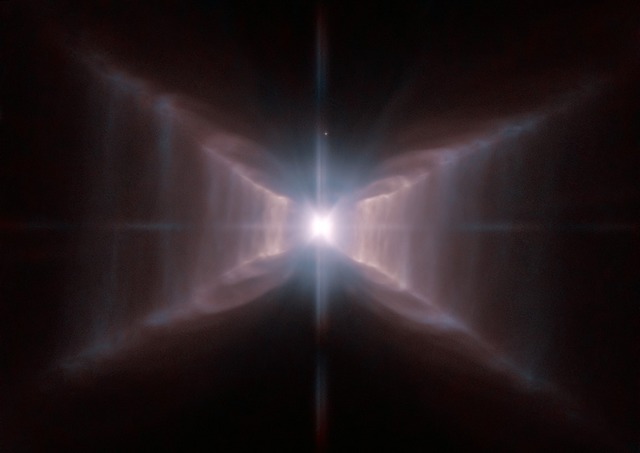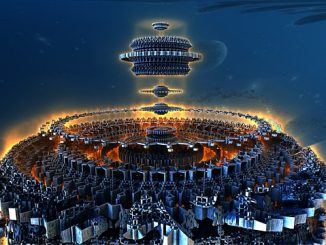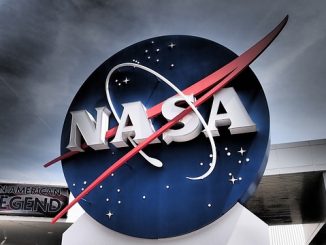
As much as we want to travel outside our planet and explore the deep realms of space, there’s one big problem that has been hindering our progress: speed. Or more specifically, the need for extreme speed.
With our current technologies, the farthest our astronauts can travel to is Mars. Such trip typically takes two to three years to be completed — from Earth to Mars, and back to Earth. For our astronauts, that means two to three years of exposure to harmful cosmic radiation and the hazards of microgravity. And that simply isn’t acceptable. By funding a New Jersey-based spaceflight company called Princeton Satellite Systems, NASA is hoping that can soon change.
Princeton Satellite Systems is said to be developing a miniature version of a fusion reactor that weighs ‘just’ 11 tons, measures less than 5 feet (1.5 meters) in diameter, is only 13 – 26 feet (4 – 8 meters) long, and is capable of generating around 1 kilowatt of power per 2.2 pounds (1 Kilogram) of mass.
Fusion reactors work by fusing or combining two hydrogen nuclei to form helium, meaning, they make use of the same chemical reaction that stars, including our Sun, constantly undergo to generate enormous amounts of energy. Unfortunately, as powerful as fusion reactors are envisioned to be, no one has yet figured out how to build one that generates more energy than what is required to produce that energy, considering that extremely high temperatures and pressures are needed for fusion of atoms to take place. Additionally, the fusion reactors being developed are quite big, which make them impractical to bring into space.
This is what will differentiate the work being done by Princeton Satellite Systems. Instead of building the usual large fusion reactors that aim to produce hundreds of megawatts of power, they are opting to build miniaturized versions that are designed to generate only about a dozen megawatts of power. It’s not just easier to build, in a manner of speaking; it will cost way less too. Just imagine, a large fusion reactor will cost $20 billion; a mini version, on the other hand, will only cost $20 million.
As described in an article by Space.com, Princeton Satellite Systems’ mini fusion reactor will involve heating a mix of deuterium and helium 3 using low-frequency radio waves, confining the plasma generated within magnetic fields, then directing it out of the engine’s nozzle to create a powerful thrust.
According to Princeton Satellite Systems president Michael Paluszek, the thrust generated can provide speeds of up to 25,000 kilometers per second (or 55.9 million miles per hour). At such velocities, space travel can significantly be shortened. For instance, a trip to Mars will be reduced to just a 310-day trip. That means less exposure to deadly radiation, and less supplies needed for the trip too. If used for a robotic mission to Pluto, it will only take four years instead of nine years, which is how long it took NASA’s New Horizons mission. Paluszek even says that a 10-megawatt fusion rocket could be used to deflect asteroids that can potentially cause widespread damage to our planet.
Princeton Satellite Systems’ initiative doesn’t come without its challenges, of course. For starters, helium 3 is quite rare, which means there’s an additional step needed for the reaction to work, that is, produce helium 3 first — either via nuclear reactors, or space mining. There’s also the matter of the reactor producing deadly neutron radiation. Even if the amount is minimal, it will still require some kind of shielding, which means more additional work. There’s also the need to use multiple reactors because apparently, radio waves can’t penetrate too deep into plasma.
Everything else considered, the researchers are aiming to demonstrate a working prototype by 2019 or 2020. We’re quite sure NASA and all other space and astronomy enthusiasts are hoping that Princeton Satellite Systems will deliver on their intent to help fast-track space missions to Mars and other target destinations.




Has there been 1 experiment proving the concept works? 1 watt of power produced? Paper fusion is hard. Real fusion is much harder.
Gayland, Yes, the experiment if you will, is called a thermal nuclear weapon. The physics are well understood, but the extreme conditions exceed our current material science.
You have stated in a confusing way the speed provided — see the space.com original article.
“the thrust generated can provide speeds of up to 25,000 kilometers per second (or 55.9 million miles per hour)”
What you mean is the exhaust velocity is 25,000 km/sec; not that the spacecraft can reach that speed (about 8% of the speed of light). If the spacecraft could reach that speed, we’d go to Mars in a few days (as fast as we could stand the acceleration/de-acceleration). To get moving that fast takes not just exhaust velocity, but also a lot of exhaust mass to balance the conservation of momentum of the spacecraft. These high exhaust velocities imply a greater engine efficiency (specific impulse) than chemical, but not really a lot of total thrust at 1 watt per pound. Thus the acceleration will be slower than a chemical engine, but for a lot longer (before the chemical engine burns through its fuel), thus speeding up the trip.
Well spotted. Something felt off to me too.
Hope they get a working prototype going and it’s feasible. Sky’s the limit…